Windows 10 has made huge steps towards creating an operating system which is suited to busy multitaskers. It’s easier than ever to switch between tasks and you can even have extra workspaces for when you’re working in different apps. All these features are available inside a new Task View feature.
Using Task View
Task View is a quick way to view and manage all of the windows and apps open on your PC at any given moment, even those that are minimized.
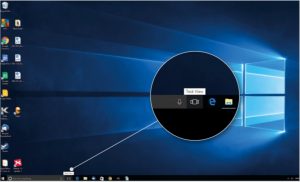
There’s an almost imperceptible new button on the Windows 10 taskbar next to the search box. It’s the new Task View button and it gives you a new way to switch between apps. Microsoft has experimented with various task switchers over the last couple of versions of Windows and this is the latest iteration.
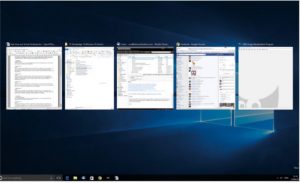
Clicking the button (or pressing Windows + Tab) brings up this display. It’s simple and remains active until you click on one of the apps to switch to that; or click on the taskbar, press Windows + Tab again or Esc to cancel. The more windows you have open, the smaller the thumbnails will be.
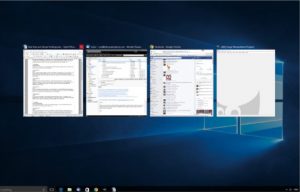
As well as clicking on one of the apps you want to launch, you can also flick between them using the arrow keys and hit return on the one you want. What’s more, you can also close apps from here too; as you hover over with the mouse, a cross will appear.
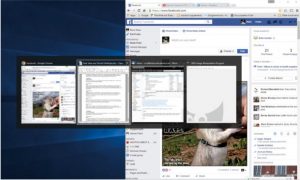
If you’re used to using Alt + Tab to flick between apps then don’t worry, this feature is still enabled. This brings up a similar thumbnail panel, which you can use to select the apps you want to switch to, or you can use to close apps (and windows) by hovering over each one and clicking the X that appears.
Using Virtual Desktop
The virtual desktop feature is a great way of separating apps, so you won’t be distracted by your email while you’re trying to get on with work.
One of the great features in Task View is the ability to add extra desktops. Virtual desktops are essentially extra workspaces, so for example you can have one space with your email and chat windows open and another where you’re working on a PowerPoint presentation without email distraction.
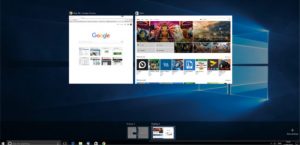
Click or tap the Add a Desktop button at the bottom of the screen and you’ll see an entirely blank desktop like this. Don’t worry, you haven’t just lost all the apps that were on your screen before, they’re on the other desktop. Here we’ve opened two more apps in a completely different workspace.
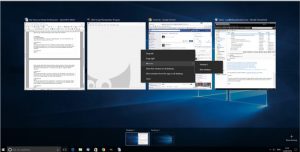
You can right-click the apps in Task View to send them to the other desktop, all clever stuff. At the bottom of the screen you’ll see a representation of this desktop and your other desktop alongside it. If you hover over another desktop, you can see all the open apps on it.
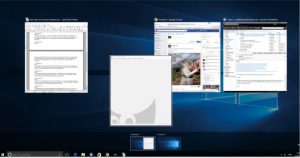
You can also drag apps between the open desktops by dropping them onto the appropriate desktop icon. An app can only reside on one desktop at once, so clicking an icon on the taskbar or Start menu could flip you between desktops if the app is open elsewhere.
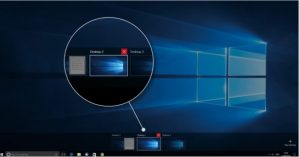
If you hover over the desktop icons, you’ll see an X appear so you can close superfluous desktops down to save resources. Doing this doesn’t close any apps down but it will add them to the oldest (original) desktop. They’re called virtual desktops for a reason.
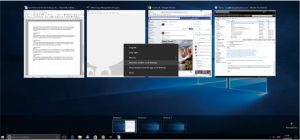
Virtual desktops are great for having different areas for different tasks. However, if you wish you can select certain apps and have them appear on all open desktops. To do this, open Task View, right-click on an app and choose Show window on all desktops or Show windows from this app.